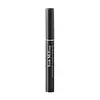What's inside
What's inside
 Key Ingredients
Key Ingredients

 Benefits
Benefits

 Concerns
Concerns

 Ingredients Side-by-side
Ingredients Side-by-side

Water
Skin ConditioningPvp
Emulsion StabilisingMica
Cosmetic ColorantOzokerite
Emulsion StabilisingStearic Acid
CleansingCetearyl Alcohol
EmollientCopernicia Cerifera Wax
Propylene Glycol
HumectantHydrogenated Vegetable Oil
EmollientNylon-6
Glyceryl Stearate
EmollientCera Alba
EmollientPEG-100 Stearate
Hydrogenated Palm Acid
Stearyl Stearate
EmollientTriethanolamine
BufferingPhenoxyethanol
PreservativeMethylparaben
PreservativePropylparaben
PreservativeTocopheryl Acetate
AntioxidantSimmondsia Chinensis Seed Oil
EmollientPisum Sativum Peptide
Skin ConditioningLeuconostoc/Radish Root Ferment Filtrate
AntimicrobialCI 77499
Cosmetic ColorantWater, Pvp, Mica, Ozokerite, Stearic Acid, Cetearyl Alcohol, Copernicia Cerifera Wax, Propylene Glycol, Hydrogenated Vegetable Oil, Nylon-6, Glyceryl Stearate, Cera Alba, PEG-100 Stearate, Hydrogenated Palm Acid, Stearyl Stearate, Triethanolamine, Phenoxyethanol, Methylparaben, Propylparaben, Tocopheryl Acetate, Simmondsia Chinensis Seed Oil, Pisum Sativum Peptide, Leuconostoc/Radish Root Ferment Filtrate, CI 77499
Water
Skin ConditioningAcrylates/Ethylhexyl Acrylate Copolymer
Glyceryl Stearate Se
EmulsifyingCeteth-15
EmulsifyingAlcohol
AntimicrobialStearic Acid
CleansingNylon-6
PEG-12 Carnauba
Emulsion StabilisingCopernicia Cerifera Wax
Pvp
Emulsion StabilisingPhenoxyethanol
PreservativeMethylparaben
PreservativePotassium Hydroxide
BufferingButylparaben
MaskingPropylparaben
PreservativeLaureth-21
CleansingOzonized Jojoba Oil
EmollientSqualane
EmollientSodium Dehydroacetate
PreservativeSilica
AbrasiveIron Oxides
Titanium Dioxide
Cosmetic ColorantWater, Acrylates/Ethylhexyl Acrylate Copolymer, Glyceryl Stearate Se, Ceteth-15, Alcohol, Stearic Acid, Nylon-6, PEG-12 Carnauba, Copernicia Cerifera Wax, Pvp, Phenoxyethanol, Methylparaben, Potassium Hydroxide, Butylparaben, Propylparaben, Laureth-21, Ozonized Jojoba Oil, Squalane, Sodium Dehydroacetate, Silica, Iron Oxides, Titanium Dioxide
Ingredients Explained
These ingredients are found in both products.
Ingredients higher up in an ingredient list are typically present in a larger amount.
Copernicia Cerifera Wax comes from a palm tree native to Brazil; another name for this ingredient is Carnauba Wax.
This ingredient is used to thicken texture and also leaves behind a film when applied.
Fun fact: This wax has the highest melting point of all natural waxes and low solubility.
Learn more about Copernicia Cerifera WaxMethylparaben is a preservative and is a paraben. It is used to prevent the growth of fungus, mold, and other harmful bacteria. Parabens are chemicals used as preservatives in both cosmetics and food.
Methylparaben can be synthetically created. It can also be found naturally in some fruits, such as blueberries.
Oftentimes, Methylparaben is combined with other parabens to help increase the shelf life.
The safety of Methylparaben is currently being studied. While ongoing studies are looking into the safety of parabens, the results have been very mixed. Some studies have not found Methylparaben to be harmful.
Learn more about MethylparabenWe don't have a description for Nylon-6 yet.
Phenoxyethanol is a preservative that has germicide, antimicrobial, and aromatic properties. Studies show that phenoxyethanol can prevent microbial growth. By itself, it has a scent that is similar to that of a rose.
It's often used in formulations along with Caprylyl Glycol to preserve the shelf life of products.
Propylparaben is a preservative and is a paraben with antifungal and antimicrobial properties.
This ingredient can be naturally found in plants and insects, but most of it is synthetically manufactured for human use. In cosmetics, it is usually created by reacting para-aminobenzoic acid and propanol (an alcohol).
You can usually find this ingredient in water-based products.
Parabens have come under controversy due to the claim they are hormone disruptors. Studies show conflicting results. We recommend speaking with a professional if you have any concerns.
Propylparaben is commonly found in food, medicine, and cosmetics.
Learn more about PropylparabenPvp is a water-soluble synthetic polymer and common hairstyling ingredient. It is a film-forming ingredient and used to "hold" specific shapes of hair.
Pvp is less effective in high-humidity. It tends to draw moisture, but this moisture dismantles the structure and "hold".
Stearic Acid is a fatty acid. It is an emollient, emulsifier, and texture enhancer.
As an emollient, stearic acid helps soften skin. It aids the skin's protective barrier by preventing water loss. It also provides a gentle cleansing effect without stripping away natural oils.
Stearic acid may also be used to enhance the texture of products. It can add volume and stabilize ingredients such as water and oil. This can help water and oil ingredients from separating.
Sources of stearic acid include animal or vegetable fats/oils such as coconut or shea. It can be naturally found in butter, cocoa butter, shea butter, vegetable fats, and animal tallow.
This ingredient may not be Malassezia folliculitis, or fungal-acne safe.
Learn more about Stearic AcidWater. It's the most common cosmetic ingredient of all. You'll usually see it at the top of ingredient lists, meaning that it makes up the largest part of the product.
So why is it so popular? Water most often acts as a solvent - this means that it helps dissolve other ingredients into the formulation.
You'll also recognize water as that liquid we all need to stay alive. If you see this, drink a glass of water. Stay hydrated!
Learn more about Water